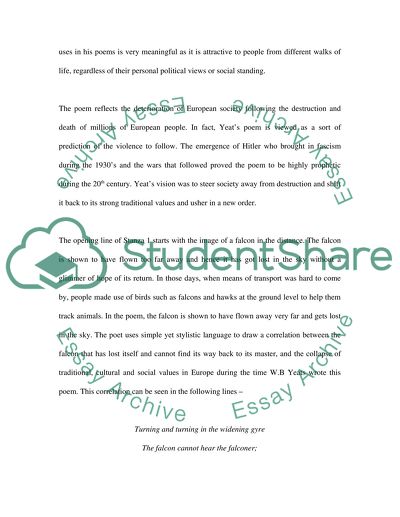Cite this document
(“The Second Coming by William Butler Yeats Essay”, n.d.)
Retrieved from https://studentshare.org/literature/1476880-critical-analysis-of-a-literature-text-poem-the
Retrieved from https://studentshare.org/literature/1476880-critical-analysis-of-a-literature-text-poem-the
(The Second Coming by William Butler Yeats Essay)
https://studentshare.org/literature/1476880-critical-analysis-of-a-literature-text-poem-the.
https://studentshare.org/literature/1476880-critical-analysis-of-a-literature-text-poem-the.
“The Second Coming by William Butler Yeats Essay”, n.d. https://studentshare.org/literature/1476880-critical-analysis-of-a-literature-text-poem-the.


